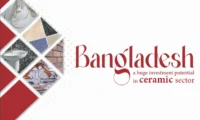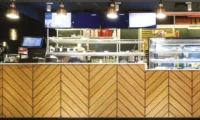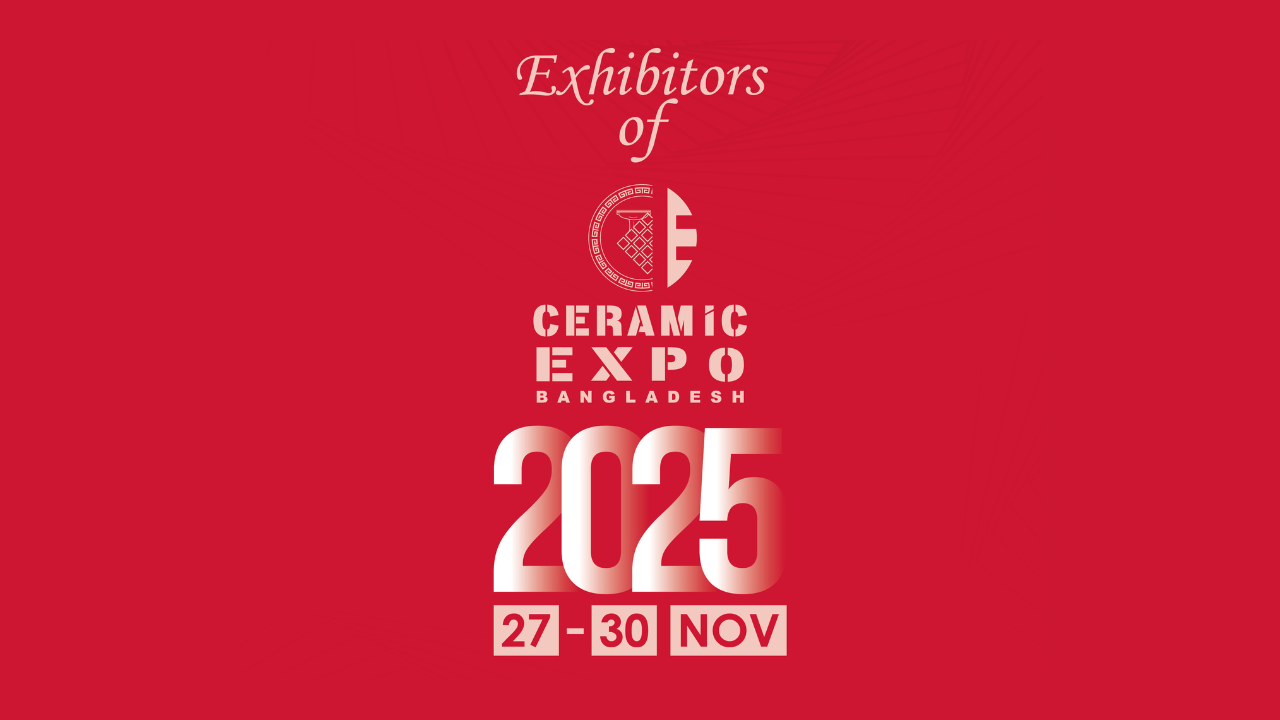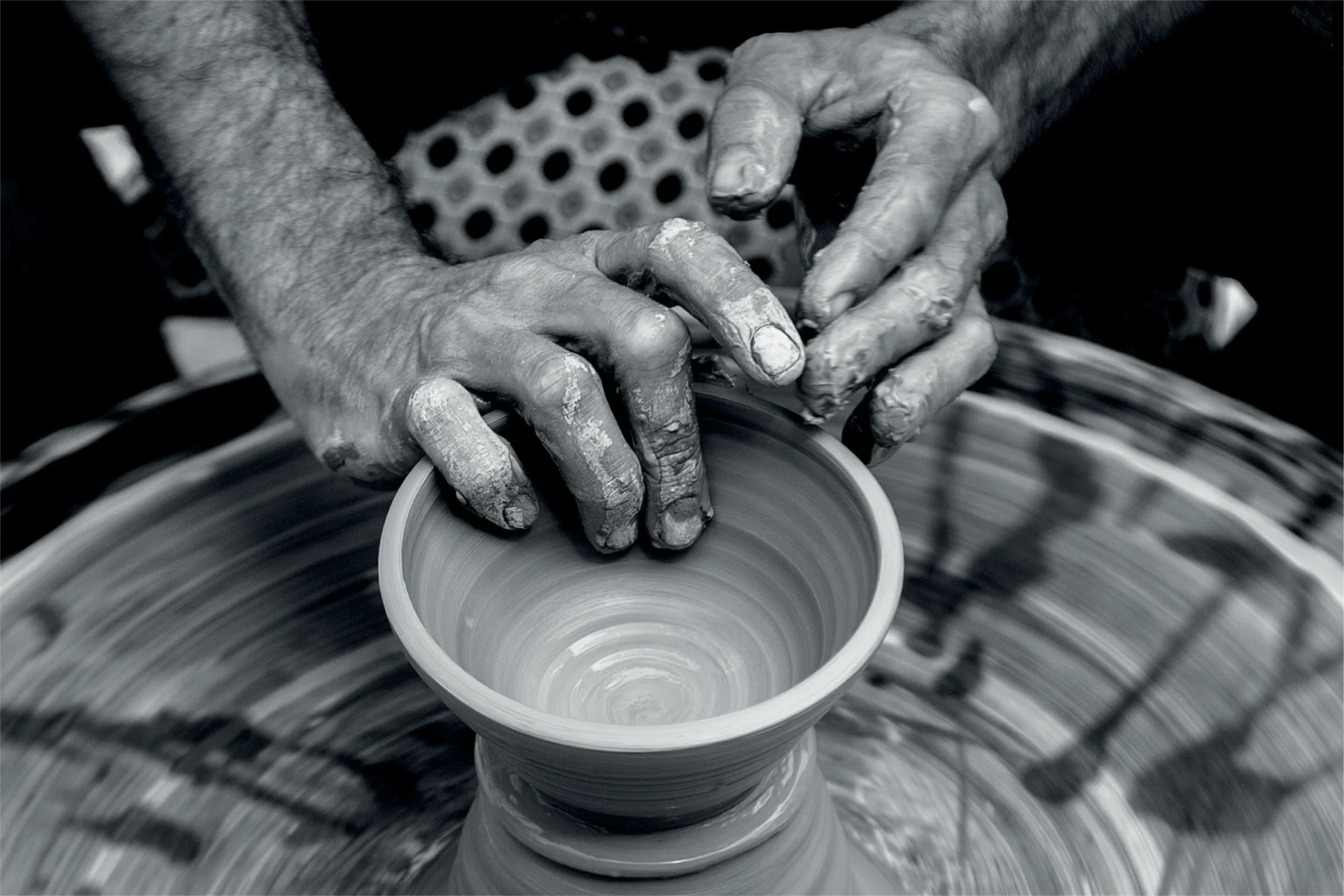
The origin of pottery in Bangladesh dates back to the later or post Mohenjo-daro and Harappa civilization and to the Indo-Aryan Vedic age, according to the research on ceramic earthenware and artifacts found after excavation of the ruins in Mahasthangarh of Bogura and Wari-Bateshwar in Narsingdi. Discoveries in Wari-Bateshwar included two millennium old potteries and terracotta. The potters then used traditional methods to make water vessels and sculptures for worshipping and as household utensils and showpieces. In the medieval age, the potters were popularised by the Hindu and Buddhist rulers and zamindars when they used to make statues of gods and goddesses, Buddha, plates, other aesthetical items and terracotta plaques in the temples and monasteries. The potters made everyday household items for sale in the local markets to earn a living. In the past century, the white clay deposits were first found in Mymensingh, Sylhet and Netrokona, the largest of which was discovered at Bijoypur of Mymensingh in 1957. Since the discovery of the white clay reserves in Bangladesh, the ceramic industry has come a long way.

‘Ceramic’ comes from the Greek word meaning ‘Pottery’. The journey of ceramics started through pottery and was initially only a mixture of inorganic, non-metallic clay which could be heated at very high temperature to make it hold its shape. Since then, mankind has found multifarious uses for this clay and the quality of the clay has been improved. Ceramic in this era has much hardness and strength, is heat resistant, is a good insulator, unreactive to other chemicals and long-lasting and hard-wearing. Among its many uses, the ceramics industry started in Bangladesh with just the manufacture of tableware and now covers four broad subsectors: Tableware, Tiles, Sanitary ware and Ceramic Bricks. A brief review of the journey of ceramics in Bangladesh is portrayed below.
In 1959 the industry took its nascent steps with only one small tableware manufacturing plant in Bogura, Tajma Ceramic Industries Ltd. Tajma Ceramics is the first ceramic earthenware plant to produce porcelain tableware using traditional methods.
In 1962, Mirpur Ceramic Works Ltd in Dhaka started to produce heavy clay products using German plant and technology and developed a reputation of manufacturing best quality ceramic bricks in the subcontinent.
In 1966, Peoples Ceramic Industries Ltd, formerly known as Pakistan Ceramic Industries, located in Tongi, Gazipur, started production using modern porcelain tableware manufacturing technology procured from Japan. They started exporting their products
In 1974, the country’s first non-heavy clay building ceramic plant came on the stream, Dacca Ceramic & Sanitary-wares Ltd. The company was the first to start production of sanitary ware at Tongi, Gazipur.
In 1985, Monno Ceramic Industries Ltd transformed and revolutionised the exports of local ceramic products by branding Bangladesh ceramic products on an international level, using West European and Japanese plants and machinery. Monno Ceramic is the first industry to use ultra-modern technologies to produce porcelain tableware aimed at exporting worldwide. Later it added its bone china tableware unit also aimed at improving the exports of ceramic tableware from Bangladesh.
In 1986, Bangladesh Insulator & Sanitary ware Factory Ltd. (BISF) started manufacture of ceramic tiles at Mirpur, Dhaka, with Czech machinery and technology. In the same year, Bengal Fine Ceramics Ltd, the first stoneware tableware manufacturer in Bangladesh, located in Dhaka, entered the domestic and international markets.
In 1992, with the exponentially growing ceramic industry, a nationally recognised trade organisation of manufacturers and exporters of ceramic tableware, pottery, tiles, sanitary ware, insulator and other ceramic products was formed, called Bangladesh Ceramic Manufacturers & Exporters Association (BCMEA)
In 1993, Madhumati Tiles Ltd. became the country’s first tile manufacturer to use modern German and Italian technologies to produce the latest standard ceramic tiles that domestic consumers see and use at present.
In 1999, Shinepukur Ceramics Ltd. started production of porcelain and bone china tableware with Japanese, German and French machinery and technology. It earned a reputation for being one of the major exporters in Asia.
Ceramic Industry Scenario (FY 2021-22)
An industrial revolution has resulted in a burgeoning Ceramic Industry since the start of its journey with just one small tableware manufacturing plant. Today, there are more than 70 ceramic manufacturers in operation in the country with core products being tiles, tableware, sanitary ware and bricks. As the country experiences steady economic growth and urbanisation, the local demand for ceramic products too continues to grow. These ceramic bricks, tiles and sanitary ware have been used in several mega projects by the government to ensure overall infrastructural development. The growth trend is an indication of the industry’s potential to be one of the top foreign exchange earners. And the tableware made in Bangladesh, both Bone China and Porcelain, is famous around the world for its eminent quality and design. Here is a snapshot of Bangladesh’s ceramic industry:
Quality Raw Materials:
The exponential growth in the ceramic sector is owing to the high-quality ceramic products manufactured in Bangladesh. The ceramic sector has the availability of uninterrupted Sulphur-free natural gas and the latest cutting-edge technologies imported from Germany, which make our products shinier and more durable. The glaze and pigments are lead and cadmium-free and 100 per cent halal ingredients are used in the production process.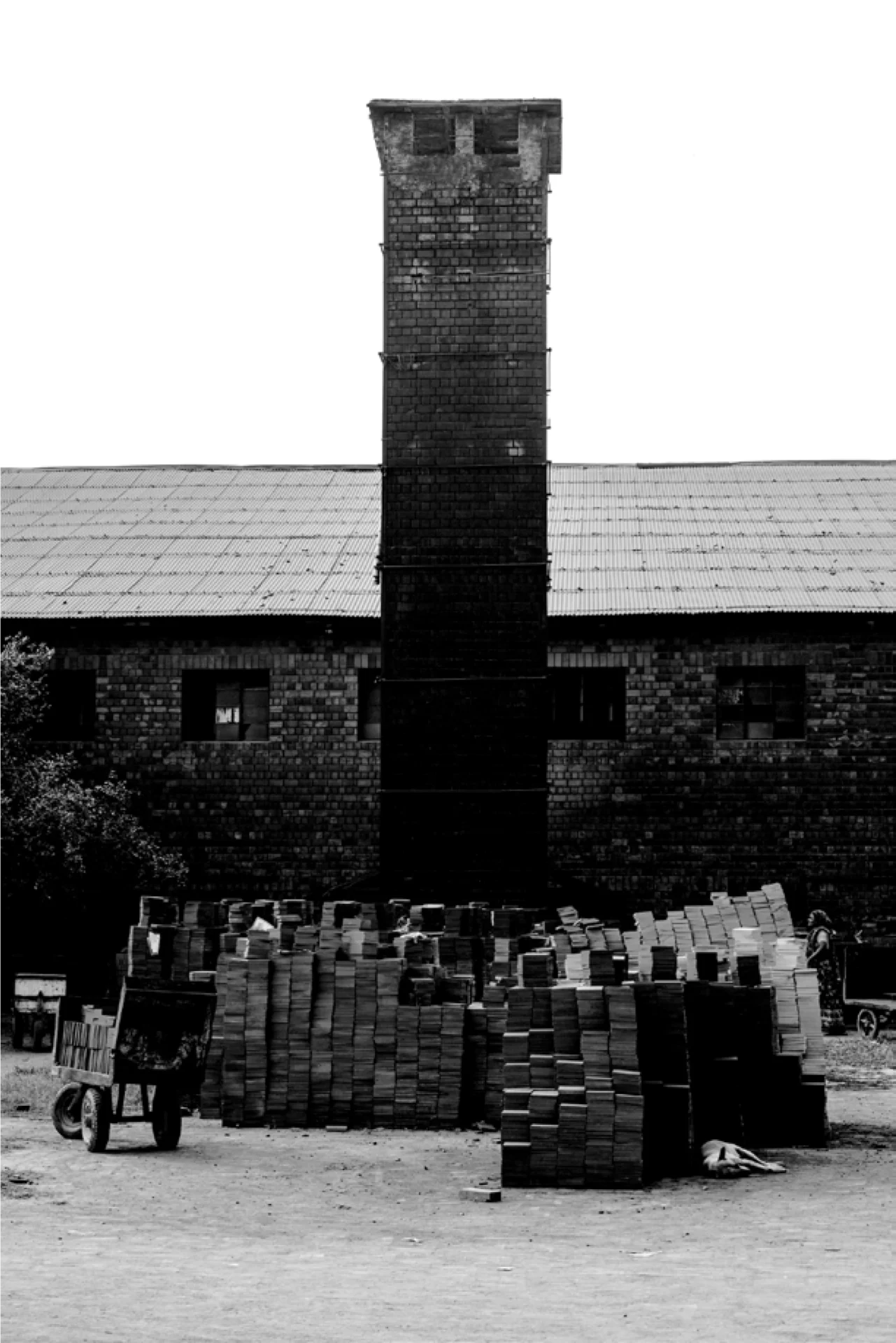
The other factor in favour of the industry flourishing is the relatively low labour cost yet availability of skilled manpower. The direct manpower involvement in the industry is about 52,000 whilst the indirect involvement is over half a million. The industry is considerably compassionate towards the women and people with disability. The industry works to train women and physically challenged workers for inclusivity. Around 20 per cent of the workforce is highly-skilled women. Today owing to these favourable conditions, the industry is distinguished around the world. Investment: The total investment, both local and international, in the industry is about US$ 1.70 billion. The investment share of tiles is 62 per cent, tableware 23 per cent and sanitary ware 15 per cent. The sector has lured foreign investment mainly from China and the Middle East. These joint venture partners include RAK Ceramics, Fu Wang and China-Bangla; the largest being RAK of the UAE. Annual Production Capacity The current annual production capacity of the local companies of the 3 sub-sectors stands at: Tableware : 308
Million pieces Tiles : 210 Million square meters
Sanitary ware : 19 Million pieces Domestic Market Consumption
The ceramic sector in Bangladesh caters to 80 per cent of the total local demand for ceramic products. The domestic market consumption of ceramic products is 74.38 per cent with 25.62 per cent being imported. To keep up with these skyrocketing f igures, the local companies have been amplifying their plants and operations. The domestic consumption of tiles is $650 million, tableware $75 million and sanitary ware $180 million yearly. Advanced Ceramics A much wider array of applications of ceramics has emerged in recent times, namely, ‘Advanced Ceramics’ The value-added features of these ceramics allow them to be utilised for issues like energy conservation, water purification, electronic and biomedical applications. The global market for these products is experiencing a high growth momentum. Bangladesh is exploring beyond traditional usage of ceramics and tapping into this prospective segment. Companies and universities are coming together, getting deep into research and development to explore the potential of advanced ceramics.
Exports The ceramic sector has made a significant contribution to GDP (gross domestic product) 0.21 per cent in the year 2020-21. The year saw ceramics exports worth over $50 million. Of this total exported volume, tableware accounts for the lion’s share, at 98 per cent. And both sanitary ware and tiles account for 1.0 per cent each. About 17 per cent of the total export value is exported to Germany in the form of tableware. Even though this export level is attributed to the high-quality products manufactured here in Bangladesh, it is also owing to the flexibility in Minimum Order Quantity, capability to export in bulks and the GSP facilities that Bangladesh enjoys. Exports to over 50 countries, such as the USA, /Canada, the UK, Germany, France, Italy, Sweden, Switzerland, Norway, Greece, Ireland, the Netherlands, Spain, Austria, Belgium, Denmark, Finland, Poland, Australia, New Zealand, Japan, Russian Federation, the UAE, Saudi Arabia, Kuwait, Egypt, Libya, Turkey, Jordan, Iran, Qatar, Oman, Syria, Lebanon, Pakistan, Sri Lanka, Nepal, India, the Maldives, Taiwan, Malaysia, Singapore, Brunei, Myanmar, Thailand, Indonesia, Argentina, Chili, Peru, Colombia and Brazil. High Profile Users Bangladesh Ceramics has touched the lives of many high-profile users. It has carved its place in the Buckingham Palace of Great Britain, the British Parliament, the Presidential palaces of India and Pakistan, the Royal Palace of Bhutan, Emirates Airlines and many more. Global buyers from different parts of the world are: USA: Crate & Barrel, Libbey, Pottery Barn, Williams-Sonoma, Michael Aram, 10 Strawberry Street UK: Royal Doulton, Wedgwood, Portmeirion Group, Rosenthal, Goodfellows, Churchill, waitrose, Sophie Conran, Jersey Pottery, John Lewis EUROPE: ZARA Home, Monoprix, Villeroy&Boch, XXXLUTZ, Ionia, Rosendahl, LPP, Habitat, Taitu, H&M, Kasanova, Migros, SchonhuberFranchi Asia: Noritake, Good Earth, DLF, ICA, Pure, Westside, INV Home The future of the ceramic sector in Bangladesh looks very promising. Special investment is being made to enhance the skillset of the workers involved in the ceramic sector. The use of modern technology also keeps on growing and so does the procurement of quality raw materials. Advanced ceramics are also being manufactured on a mass scale which has a lot of potential not only in the markets but also in the lives of people. In the next five years, about 20 new companies are in the pipeline to be introduced to this rapidly growing sector. Export is predicted to rise to around $100 million and investment will grow another $1.0 billion. We wish to achieve this ambitious goal with certainty and serve people all around the world with quality ceramics products made in Bangladesh.



